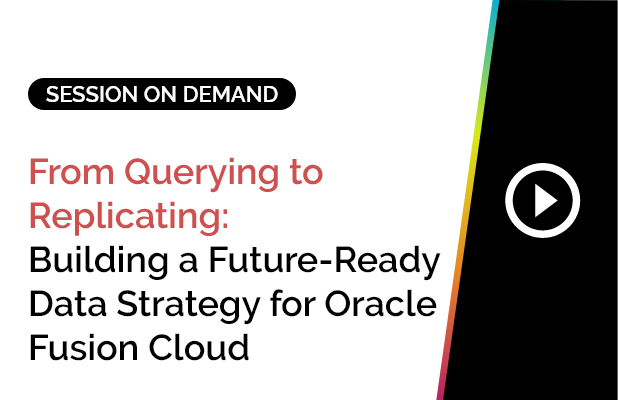The Premise
Gender diversity in the workplace is an age-old problem, made worse in recent years after the COVID-19 pandemic. HR Tech Series reports, “Over 2 million women left the workforce during the COVID-19 pandemic and millions of jobs primarily held by women (in retail, restaurant, travel and hospitality fields) have vanished without certainty they will return. Even as industries reopen, employment opportunities are still sluggish.”
This, despite the fact that gender diversity at work has proven to have not just social but also fiscal benefits. In fact, McKinsey reports found that companies in the top quartile for gender diversity in the workplace were 21% more likely to outperform their peers. Promoting gender diversity in the workplace has reputational benefits too, with a journal from Psychology of Women Quarterly (PWQ) reporting that gender-diverse organizations were rated as more prestigious than a company that did not address its gender diversity.
In this blog, we deep dive into the nitty gritty of:
- What gender diversity in the workplace looks like
- Importance of gender diversity at work
- And how organizations can perform better on gender diversity metrics
Let’s get started!

What is Gender Diversity in the Workplace?
Gender Diversity refers to an even ratio of men and women. Some of the most well-known industry areas that see male employees’ dominance over females are computing, manufacturing, medicine, and science.
Men and women’s equal balance is required for a fair and productive working environment, more commonly than not.
Gender diversity in the workplace means that men and women are hired at a comparable rate, paid evenly, and given the same working opportunities with equal promotions.
Women account for 42% of the global workforce. But they hold less than 30% of upper management positions. The gender pay gap further exacerbates the issue, with women earning 80% of what men do despite the same level of responsibility.
That’s the seriousness of gender diversity in the workplace, despite its crucial role in organizational success.
Why is Gender Diversity in the Workplace Important?
Gender diversity is something most organizations aim to achieve. While reputation is important, gender diversity has many other pressing and substantial benefits related to an organization’s bottom line. Companies with gender diversity exceed their competitors and realize higher profits!
Gender diversity at work is essential. Warranting fair representation of women in the workplace can have positive outcomes across the organization. A Workday survey reveals that in 2023, 78% of global business leaders focused on the growing importance of DEI, with 85% allocating budgets for DEI initiatives.
Excellence does not discriminate between genders. Instead, it identifies skill and good management. That is why the most respectable organizations are open to a diverse and equitable work environment, promoting gender equality. For more insights and practical steps, you can read about how to improve diversity & Inclusion through recruitment.
Diversity in ideas and methods of thinking is vital to the success of a business venture. Great leaders understand that, and they use diversity to nurture growth, not to restrict it.
12 Benefits of Gender Diversity in the Workplace
1. Diversity in Age, Ethnicity, and Race goes a long way!
Both employers and employees must commit to fostering racial, ethnic, and age diversity through structured initiatives. Open conversations about biases, including race, gender, and orientation, are vital. Addressing these topics enhances workplace relationships, strengthens diversity efforts, and ensures organizations thrive in a global economy where inclusivity is a business imperative.
For a deeper understanding of the advantages of diversity in the workplace and strategies to effectively implement it, explore our comprehensive guide on the Advantage of Diversity in the Workplace.
2. Varied Perspectives
Gender diversity in the workplace means that employees are more likely to have various abilities and experiences. Employees in a company with greater gender diversity will have access to multiple views, which is highly useful for outlining and accomplishing a business strategy.
3. Improved Collaboration
Research shows that teams with greater representation of women have more effective and efficient conversations, leading to enhanced knowledge sharing and skill development among team members. Having women on teams can help develop team processes and promote collaboration. Women are better skilled in reading non-verbal cues. Groups with more women were more adept at taking shifts in conversation, making the most of the group’s blended expertise and skills.
4. More Comprehensive Talent Pool
Organizations that do not support women to join them miss out on half the population’s expertise and skills. Tapping into these can make a massive difference to a company’s bottom line. By focusing on effective talent acquisition, companies can build a more comprehensive talent pool and harness diverse perspectives to drive innovation and growth.
5. Increased Staff Retention
An inclusive culture in the workplace promotes confidence and opportunity. Inclusive workplaces tend to have low employee churn rates, signifying significant gains in time and money spent on recruitment. Implementing effective talent retention strategies can further enhance these benefits and create a more stable workforce. Statistics prove this. A study by McKinsey found that companies with the highest levels of gender diversity at the workplace had a 15% lower turnover rate for female employees and a 25% lower turnover rate for male employees.
6. More Innovation
In a diverse workplace, employees experience various views and opinions. When these multiple aspects meet, they often come together in unique ways, unlocking more innovation. According to research by BCG shows that companies with more diverse management teams have 19% higher revenues due to innovation.
7. Enhanced Productivity
Gender equal workforces operate better in various ways. One of the significant advantages of increased gender equality in the workplace is a more cohesive and productive workforce. Diversity of opinion drives to a more holistic way and, consequently, a more remarkable achievement.
8. Flexibility
Women around the world do most of the voluntary caring. It negatively influences their career and income chances. A more adaptable work culture can reduce or eradicate this issue. Telecommuting and part-time jobs are an advantage everyone can savor. Contrary to common belief, it does not hurt productivity.
9. Reliable Workforce
When employees feel prohibited, they do not stick around. That means that organizations that do not have gender equality run the risk of failing to draw or retain the most qualified talent for specific roles. It is also essential to define routes into leadership and management for people of all genders, not just men.
10. Content Employees
Gender equality makes the whole workforce more content. Any steps an organization takes to equalize the playing field for women equalize it for all genders. It means that men can expect roles that generally go to women if those roles make them comfortable.
11. Better Customer-Targeting
In a regular workplace, women are not included in making decisions concerning product development and marketing. Suppose you get women included at all levels of your organization. In that case, it is easier for you to target this massive section of your customer base efficiently – and quickly. Women have the potential to make your organization much more profitable in the long run.
12. Improved Quality of Life
An organization with flexible work, fair pay, diverse hiring, and continuing to innovate, and develop, leads to a better quality of life for all genders. Men can spend more time with their families and have a more harmonious life. Meanwhile, women may find their participation is prized and feel more satisfied in their working lives.
Ways to Promote Gender Diversity in the Workplace
Promoting gender diversity in the workplace is not just a moral responsibility but also a strategic advantage. Companies that actively foster gender diversity are 21% more likely to experience above-average profitability, according to a McKinsey study.
Here are some effective strategies to ensure your organization thrives through inclusivity:
1. Build Inclusive Hiring Practices
Start by addressing biases in your hiring process. Use diverse interview panels to ensure fair evaluations and remove gendered language from job descriptions, which can deter female candidates. For example, words like “dominate” or “aggressive” can inadvertently discourage women from applying.
2. Foster a Safe Work Environment
A safe and inclusive workplace is essential for retaining diverse talent. Implement strict anti-discrimination and anti-harassment policies and provide anonymous channels for employees to raise concerns. Regular training on unconscious bias and workplace etiquette can further ensure a culture of respect and equality.
3. Flexible Work Options
Flexibility at work can significantly boost gender diversity at work. Offer remote work options, flexible hours, and equitable parental leave policies to support employees’ work-life balance.
4. Invest in Leadership Programs for Women
Mentorship and training programs play a critical role in helping women advance into leadership roles. Create initiatives that focus on developing skills, building networks, and offering growth opportunities.
Promoting gender diversity is a continuous effort that requires commitment at every level of an organization. By adopting these strategies, companies can create a more equitable workplace that drives innovation, engagement, and long-term success.
Conclusion: Why Gender Diversity at Work Matters and What You Can Do About It
The importance of gender diversity in the workplace cannot be overstated. It is not just a moral imperative but a business advantage.
Closing the gender gap requires intentional actions, such as implementing inclusive policies, offering leadership opportunities, and measuring progress toward gender diversity in the workplace as a core organizational goal.
Business leaders need to build a culture that promotes safe interaction so topics like inequality can be discussed openly.
Some work needs to be done at a public policy level. At the same time, companies should outline precise actions they can take to make substantial changes. It is time to permanently close the gender gap and tap into the potential the world has been ignoring for centuries.















